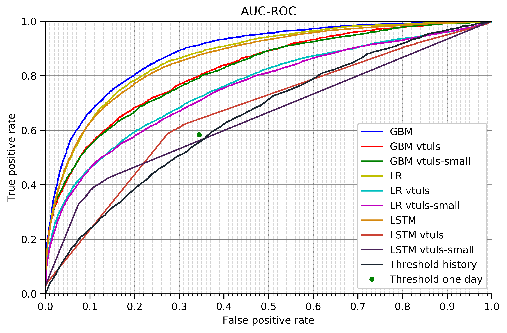WIP: Vital Sign Analysis: Decompensation
Posted on Fri 20 September 2019 in research
Early and accurate prediction of decompensation (functional deterioration) in patients in domestic settings may help prevent deaths. Based on values that can be measured from portable devices such as heart rate, blood oxygen saturation, systolic blood pressure, temperature, and age, we study the prediction capability of machine learning algorithms to determine patient decompensation (death) in the next 24 hours. Two sources of variability influencing the performance of predictions are investigated during training and inference: (i) the effect of reducing the number of input signals from those available in our source data set (about 17 different vital signs; source: MIMIC-III) to a subset that can be collected by portable devices; (ii) the effect of the sampling frequency (how many measurements per unit of time are necessary for training a reliable prediction system). We conclude our analysis with a inference-only study on the effect of the number of measurements preceding the prediction (does having more measurements improve prediction?).
Reproducibility Checklist
- All datasets used in this study are public
- A software package will be made available when work is published.
Partnership
Part of this study was conducted in partnership with VTULS.

Preview Results: ROC comparison for various systems. The best results are achieved with the original 17 features. The threshold one day baseline, denoted by a green dot, represents the performance with a portable device with only the last vital signs measurement of a given sample.